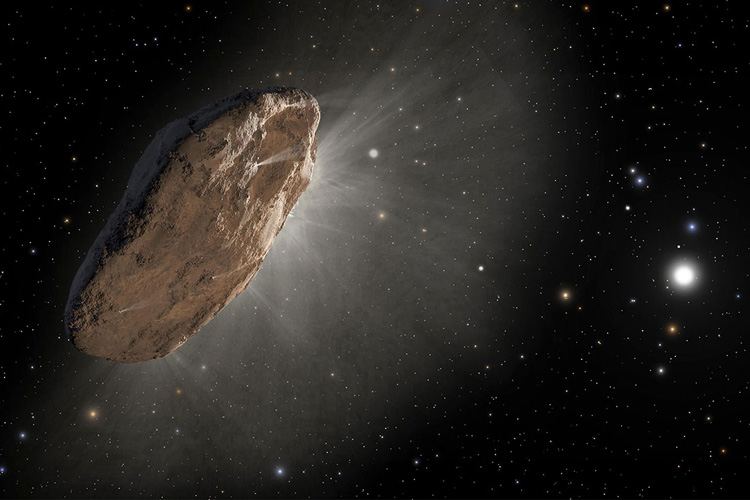Mysterious interstellar object may have altered solar system orbits, study says
Massive object passing through solar system is a better explanation for nature of orbits of Jupiter, Saturn and Neptune
A massive interstellar object passing through our solar system during its formative years likely altered the orbits of planets into trajectories observed today, a new study says.
Interactions with their neighbours and forces from the sun are thought to have caused the early orbits of the planets in the solar system to migrate inwards or outwards.
It was also common at this time for the planets to be visited by celestial objects from outside the system, not unlike the big space rock Oumuamua, which was spotted in 2017 and confirmed as the first known interstellar visitor.
The new study, which is still to be peer reviewed, argues that current theories don’t clearly explain the nature of the orbits of gas giant planets like Saturn, Neptune and Jupiter.
An interstellar object between 2 to 50 times the mass of Jupiter passing through the solar system provides a better explanation, the study says.

The massive object flew through the solar system at a velocity of about 6km per second, coming within 20 astronomical units of the sun and shaping the orbits of the gas giant planets into what we see now. One astronomical unit, AU, is the average distance between the earth and the sun, or about 150m km.
“We demonstrate a single encounter with a 2–50 Jupiter-mass object, passing through the solar system at a perihelion distance less than 20AU and a hyperbolic excess velocity less than 6km per second, can excite the giant planets’ eccentricities and mutual inclinations to values comparable to those observed,” the study states.
The study conducted simulations to show that this scenario had a 1 in 100 chance of taking place, making it a better explanation than other theories.
The study calls for further exploration of this scenario by applying it to earlier phases in planet formation as well as to the effects that an interstellar object flyby could have had on rocky terrestrial planets like our own and Mars.
“The scenario of a close encounter with a substellar object offers a plausible explanation for the origin of moderate eccentricities and inclinations and the secular architecture of the planets,” it states.
Join our commenting forum
Join thought-provoking conversations, follow other Independent readers and see their replies
0Comments